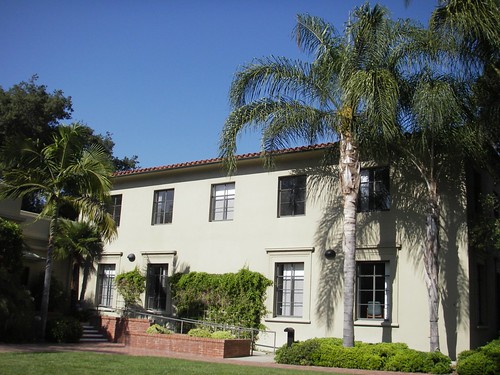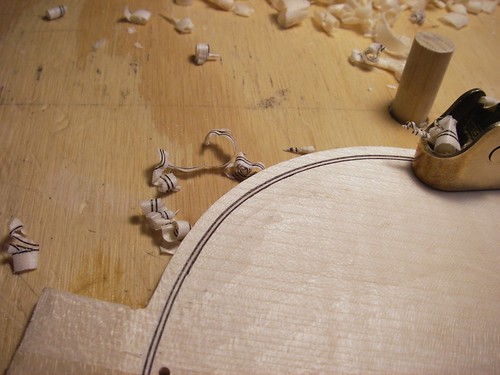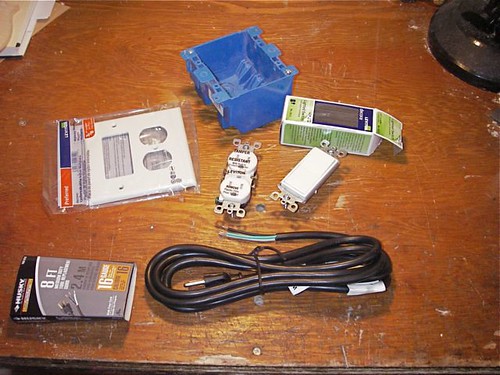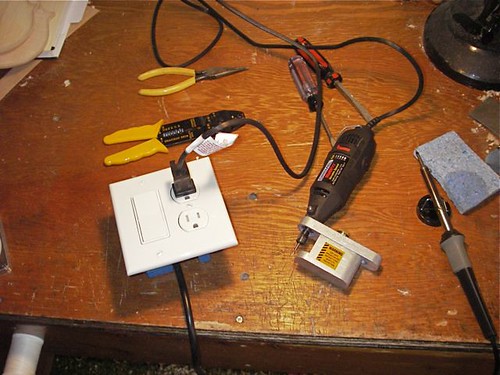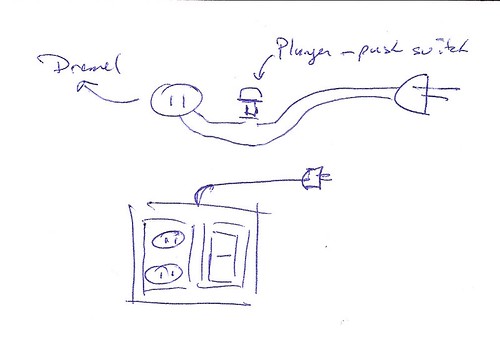So today I'll post about the workshop. It's held in Claremont, California, put on by Jim Brown, and taught/led by Michael Darnton of Chicago. The grounds are not too bad.
The violin-makers workshop was held on the ground-floor in this wing of the building --
while the bow-makers were across the way in this wing, behind the arched walkway --
For me the greatest thing is that I learn so much I didn't even know to ask about.
One of my goals this time was to learn more about the outline and corners. I believe I made a major conceptual breakthrough in my understanding of corner geometry. I was never happy with the shape of my violin corners, mainly because I didn't have a clear picture in my head. Now, after years of having it presented to me, something finally clicked. It's now a matter of execution.
Towards the end of my week there, I got the purfling in both plates of my Brothers Amati fiddle.
And I spent some time working the edges down.
The workshop's official site is here. If I understand it correctly, the workshop is accepting beginners during the third week.
I have more photos of the workshop here.
Michael Darnton's website is here.

